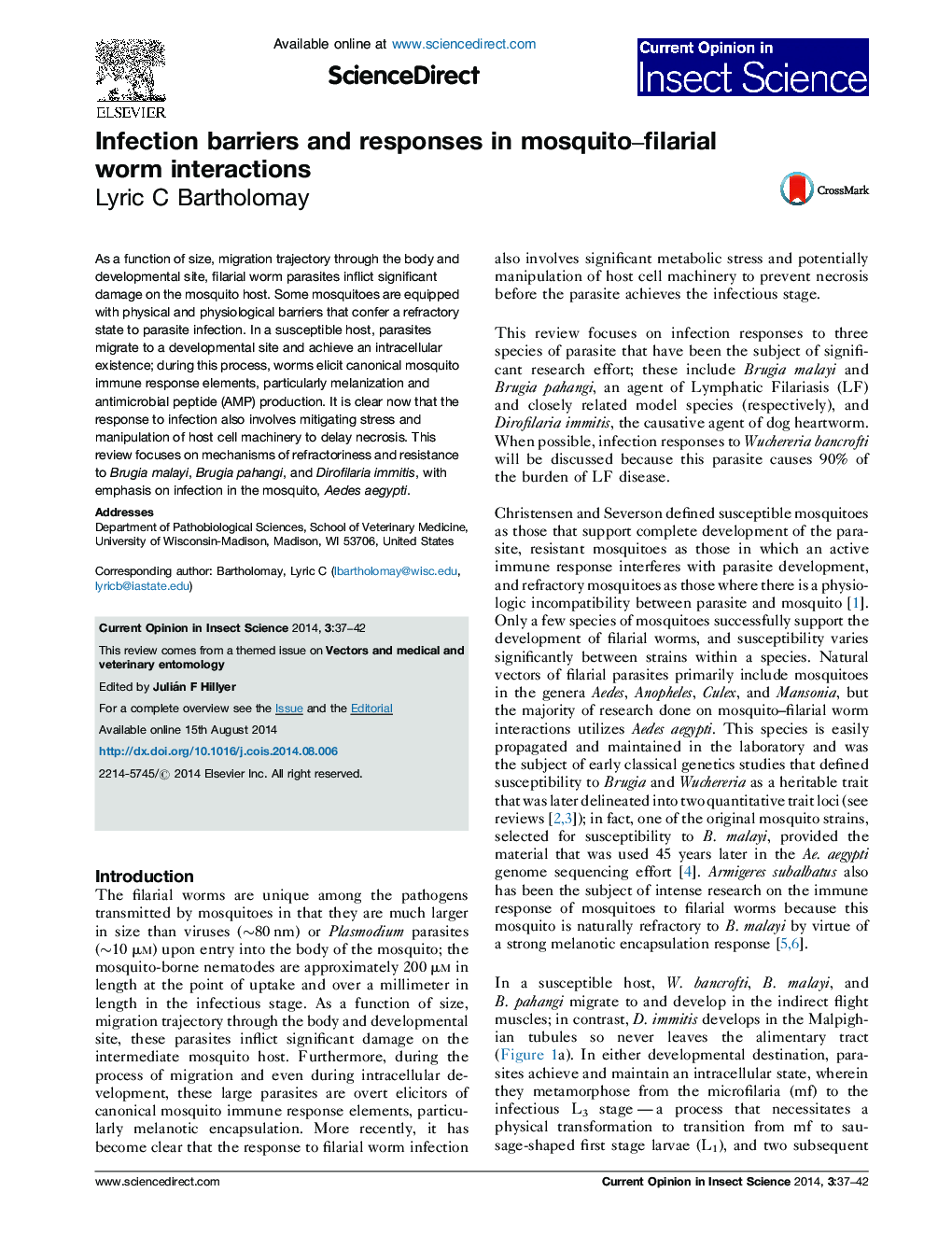| Article ID | Journal | Published Year | Pages | File Type |
|---|---|---|---|---|
| 4508274 | Current Opinion in Insect Science | 2014 | 6 Pages |
•Mosquito immune responses to filarial worms include melanization and antimicrobial peptide production.•Mosquito infection responses to filarial worms help maintain or regain homeostasis after tissue damage.•The spectrum of refractory, resistance, and tolerance mechanisms/factors that are produced during worm infection are discussed.
As a function of size, migration trajectory through the body and developmental site, filarial worm parasites inflict significant damage on the mosquito host. Some mosquitoes are equipped with physical and physiological barriers that confer a refractory state to parasite infection. In a susceptible host, parasites migrate to a developmental site and achieve an intracellular existence; during this process, worms elicit canonical mosquito immune response elements, particularly melanization and antimicrobial peptide (AMP) production. It is clear now that the response to infection also involves mitigating stress and manipulation of host cell machinery to delay necrosis. This review focuses on mechanisms of refractoriness and resistance to Brugia malayi, Brugia pahangi, and Dirofilaria immitis, with emphasis on infection in the mosquito, Aedes aegypti.
